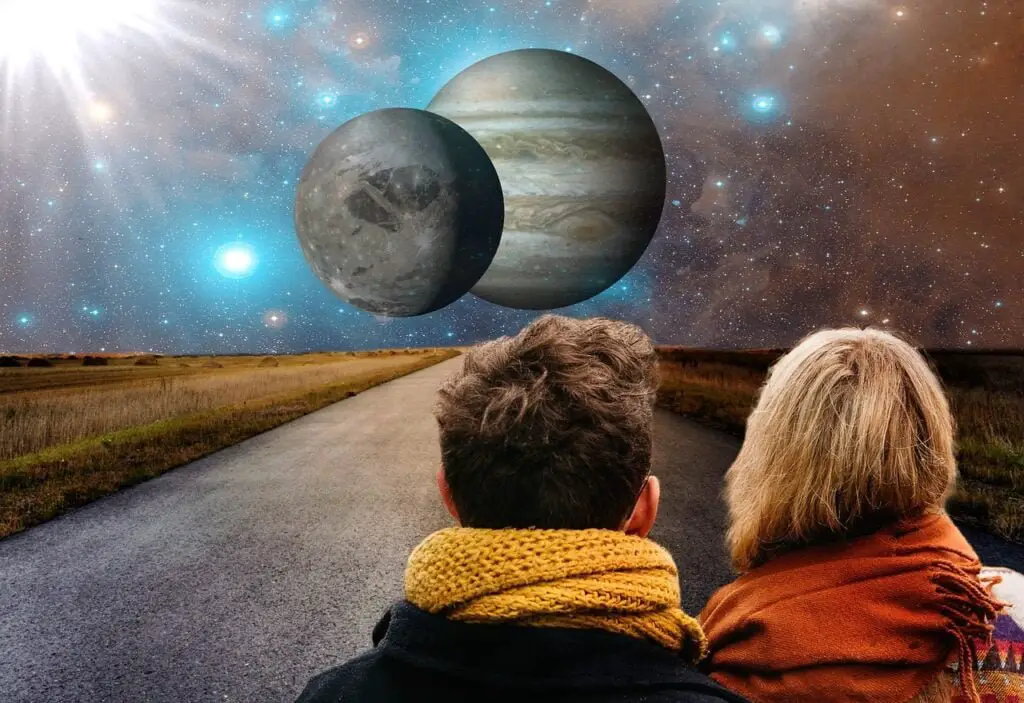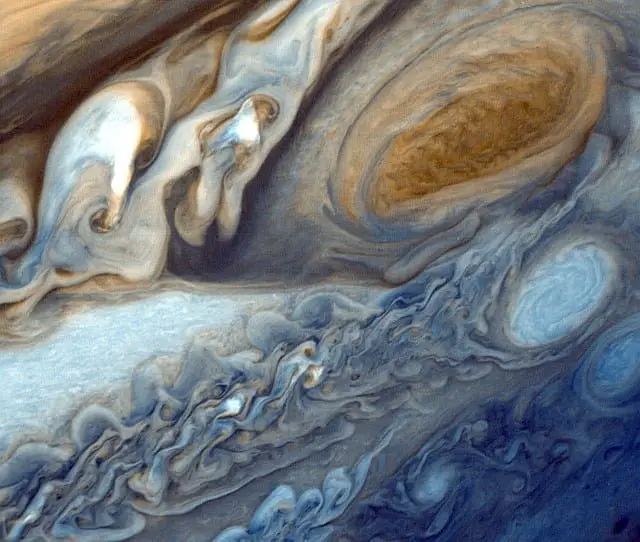How Long Is a Day on Jupiter?
Intro.
Embark on a cosmic odyssey with us as we delve into the enigmatic world of Jupiter to answer the age-old question: How long is a day on Jupiter? This expansive exploration promises to unravel the celestial mysteries surrounding the gas giant, providing a comprehensive understanding of its rotation and the factors that shape its unique temporal characteristics.
Understanding Jupiter’s Rotation

- The Orbital Dynamics
Jupiter, a colossal ball of swirling gases, takes center stage in our solar system. To comprehend a day on Jupiter, we must first grasp its intricate orbital dance. Unlike Earth’s leisurely 24-hour spin, Jupiter completes a full rotation on its axis in a mere 9 hours and 55 minutes. This remarkable swiftness sets the stage for a deeper exploration of the planet’s atmospheric phenomena and internal dynamics.
How Long Is a Day on Jupiter?
- The Great Red Spot Influence
At the heart of Jupiter’s rotational mysteries lies the iconic Great Red Spot. This colossal storm, spanning centuries, contributes significantly to the planet’s rotation. The intricate interplay of atmospheric forces, fueled by this massive tempest, shapes the dynamics of Jupiter’s rotation and imparts a distinct tempo to its day.
Factors Influencing Jupiter’s Rotation

- Composition Matters
Jupiter’s composition, predominantly composed of hydrogen and helium, distinguishes it from terrestrial planets. The colossal mass and gaseous nature of Jupiter generate powerful forces that influence its rotation. Understanding this intricate relationship between composition and rotational dynamics unveils the complexity that defines this gas giant’s celestial identity.
Jupiter
- The Dance of Magnetic Fields
Jupiter’s magnetic field, a potent force in its own right, adds another layer to the rotational narrative. The planet’s rapid spin induces a strong magnetic field that, in turn, influences its rotation. This magnetic dance not only contributes to the duration of a day on Jupiter but also shapes the captivating auroras that grace its polar regions.
Contrasting Jupiter’s Day with Earth’s
- A Cosmic Waltz of Contrasts
Comparing Jupiter’s day with Earth’s unveils a cosmic waltz of contrasts. While Earth completes a single rotation every 24 hours, Jupiter whirls through nearly two and a half rotations in the same time frame. This stark difference emphasizes the diverse nature of celestial bodies within our solar system, each performing its mesmerizing dance.
How Long Is a Day on Jupiter? Jupiter Review the Mystery
- Time Dilation and Relativity
The relativistic effects of Jupiter’s rapid rotation introduce a fascinating dimension to the concept of time on the gas giant. As Einstein’s theory of relativity suggests, time dilation occurs in regions of intense gravitational fields. Jupiter’s immense mass creates such conditions, causing time to pass slightly differently on its surface compared to Earth.
Scientific Observations and Measurements
- Technological Marvels in Astronomy
The pursuit of unraveling Jupiter’s rotational secrets has been facilitated by technological marvels in astronomy. Ground-based telescopes, coupled with space probes like NASA’s Juno mission, have allowed scientists to observe and measure Jupiter’s rotation with unprecedented precision. These advancements in technology continue to expand our understanding of the gas giant’s temporal intricacies. - Juno’s Insights into Jupiter’s Rotation
NASA’s Juno spacecraft, designed explicitly to study Jupiter, has provided a wealth of data shedding light on the planet’s internal dynamics. Juno’s polar orbit allows it to capture detailed information about Jupiter’s gravitational field and rotation, offering invaluable insights into the factors influencing a day on this colossal gas giant.
The Significance of Understanding Jupiter’s Rotation
- Unlocking Planetary Mysteries
Beyond the curiosity surrounding Jupiter’s day, understanding its rotation holds profound implications for planetary science. The dynamics of Jupiter’s rotation offer a gateway to unraveling broader mysteries related to the formation and evolution of gas giants. This knowledge not only enriches our understanding of our solar system but also informs the study of exoplanets beyond. - Climate and Atmospheric Studies
Jupiter’s rotation is intricately linked to its atmospheric processes. The study of its day length contributes to climate and atmospheric studies, providing valuable data for scientists seeking to comprehend the complex interplay of gases and storms that define Jupiter’s ever-changing weather patterns.
Conclusion
In conclusion, the question, “How long is a day on Jupiter?” beckons us to explore the celestial wonders that lie beyond our terrestrial realm. Jupiter’s rapid rotation, influenced by the Great Red Spot, magnetic fields, and its unique composition, paints a portrait of a gas giant with a distinct celestial rhythm. As we continue our cosmic journey, the mysteries of Jupiter’s rotation stand as a testament to the boundless complexity and beauty of the celestial bodies that populate our solar system.
Why is Jupiter’s rotation so much faster than Earth’s?
The rapid rotation of Jupiter is influenced by its massive size, composition, and the presence of atmospheric features like the Great Red Spot.
How does the Great Red Spot affect Jupiter’s rotation?
The Great Red Spot, a colossal storm, contributes to the atmospheric dynamics of Jupiter, influencing its rotation patterns.
What role do magnetic fields play in Jupiter’s rotation?
Jupiter’s strong magnetic field is closely tied to its rotation, shaping the planet’s rotational characteristics and contributing to auroras.
How do scientists measure Jupiter’s rotation with precision?
Ground-based telescopes and space probes, such as NASA’s Juno mission, provide scientists with the tools to observe and measure Jupiter’s rotation.
What is time dilation, and how does it apply to Jupiter’s rotation?
Time dilation, a concept from Einstein’s theory of relativity, suggests that time passes slightly differently on Jupiter due to its intense gravitational field.
Why is understanding Jupiter’s rotation significant for planetary science?
Jupiter’s rotation holds key insights into the formation and evolution of gas giants, contributing to broader planetary science research.
How does Jupiter’s rotation impact its climate and atmospheric studies?
Studying Jupiter’s day length provides valuable data for understanding the complex interplay of gases and storms that define its weather patterns.
How Long Is a Day on Jupiter? Jupiter Review the Mystery
- How Long Is a Day on Jupiter?
- How Long Is a Day on Jupiter?
- How Long Is a Day on Jupiter?
- How Long Is a Day on Jupiter?
- How Long Is a Day on Jupiter?